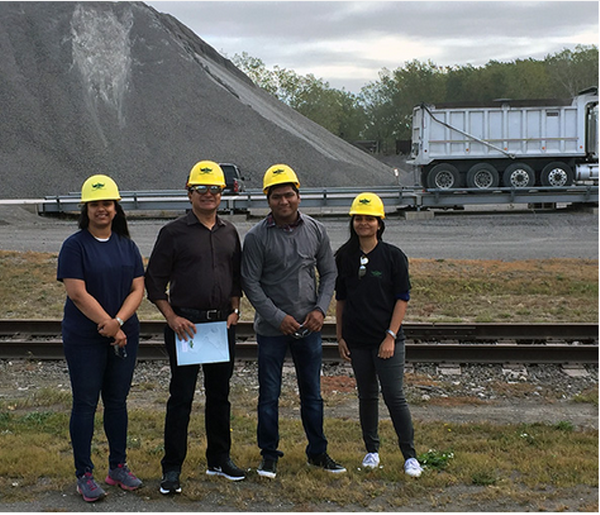Professor Reddy is researching zero emissions from landfills
story title

At steel mills, slag is a by-product that is generated after steel has been cooked up using iron and other materials in a furnace at high temperatures. For the owners of steel mills, steel slag is just a material that they want to clear out to make space for the fresh slag they would produce. But, for Professor Krishna Reddy of UIC’s Department of Civil and Materials Engineering, steel slag is an asset that has the potential to lower gaseous emissions being released from landfills.
Based on preliminary testing in his laboratory, he is planning to use the steel slag as a cover layer in landfills to prevent carbon dioxide from being released into the atmosphere. Apart from capturing the “fugitive gas emissions,” the use of steel slag will solve a growing problem for another local company.
Reddy is working with industry partner Phoenix Services, a contractor that manages the steel slag generated at the steel mills.
“They have to get rid of the slag and, right now, they have to dump it in a landfill if there are no markets for it,” said Reddy. “The coarser slag, which is like gravel, has a lot of markets. It can be used in roadways as an aggregate. At the same time, they create a finer slag and that does not have markets and it’s piling up.”
“From a sustainability point of view, you are conserving a natural resource and eliminating the waste”, he said.
The idea for this research grew from Reddy’s previous research, which used biochar. Biochar is organic matter that is derived out of burning biomass under low oxygen conditions and it looks similar to charcoal. It’s used extensively in farming, and mixed with the soil, and crops are grown in it. The farmers get a high yield, because the material has a high water holding capacity and it retains a lot of nutrients in the soil.
“I got the idea to use this material in my application, because no one is using it” he said. “This was several years ago. I did some research and discovered that the material can be used for landfill applications. I used it as a cover material. It creates nice biological conditions to put the bugs to work.”
Landfills generate a lot of methane gas, which is released into the atmosphere. A cover will prevent it from coming out. There are often gas extraction wells, but they are not 100 percent efficient at capturing everything and there are fugitive emissions released into atmosphere.
“I was thinking about putting a low-cost, but efficient, cover to mitigate these emissions,” said Reddy. “I put down biochar and as the methane comes out it gets converted into carbon dioxide. We got really good results. However, I was concerned and not totally happy with the outcome of this research.”
The professor was thinking of the best way to contain the carbon dioxide when he realized slag is a material he can use.
“Through carbonation, it can convert carbon dioxide into carbonates. And let it stay in the soil itself as a solid. This will prevent gases from coming out,” he said. “Basically it converts to calcium carbonate and becomes part of the soil matrix.”
Solving the problem of gas emissions is one of the goals of his research. In the U.S., small landfills and older landfills don’t have gas extraction systems. Using these as cover materials will create a passive system that prevents gases from being released. He also sees this as a potential problem solver for large landfills and landfills in developing countries.
“Biochar and slag are unused byproducts of some processes and using them in such applications is a way of finding markets for those materials,” said Reddy. “We’re basically solving two problems at the same time – getting rid of the waste and solving the environmental problem by making the landfills more effective and safer.”
Professor Reddy’s research was made possible by a $343,395 NSF grant entitled GOALI: Innovative Biochar-Slag-Soil Cover System for Zero Emissions at Landfills: Quantifying and Optimizing Coupled Biogeochemical Processes.
Learn more about Professor’s Reddy’s research at http://gagel.lab.uic.edu.